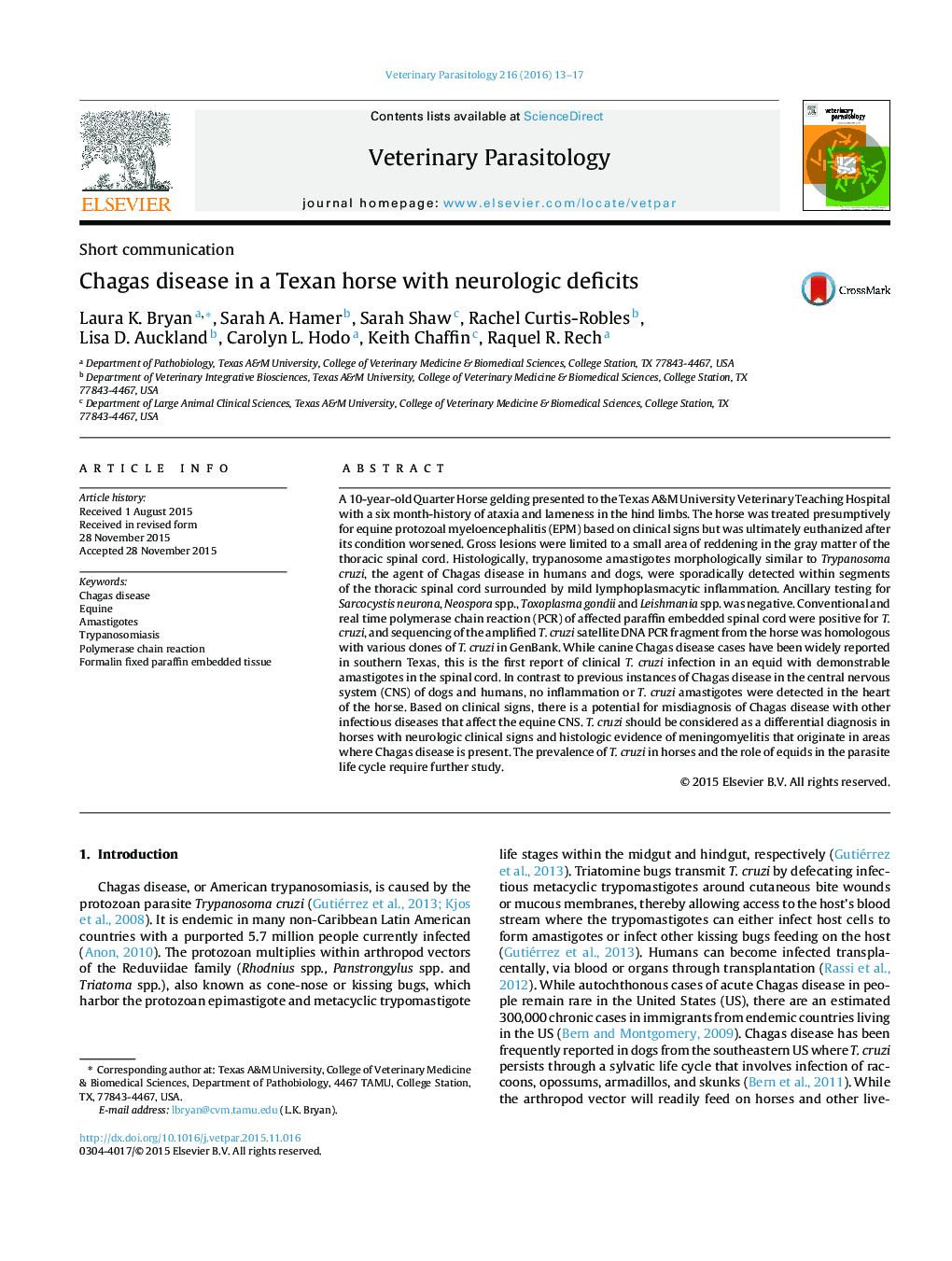| کد مقاله | کد نشریه | سال انتشار | مقاله انگلیسی | نسخه تمام متن |
|---|---|---|---|---|
| 2469965 | 1555660 | 2016 | 5 صفحه PDF | دانلود رایگان |
• First report of disease associated with Trypanosoma cruzi infection in a horse.
• First report of T. cruzi amastigotes in equine tissue.
• Amastigotes were not observed in the heart of the horse.
• The diagnosis was confirmed with histology and PCR.
A 10-year-old Quarter Horse gelding presented to the Texas A&M University Veterinary Teaching Hospital with a six month-history of ataxia and lameness in the hind limbs. The horse was treated presumptively for equine protozoal myeloencephalitis (EPM) based on clinical signs but was ultimately euthanized after its condition worsened. Gross lesions were limited to a small area of reddening in the gray matter of the thoracic spinal cord. Histologically, trypanosome amastigotes morphologically similar to Trypanosoma cruzi, the agent of Chagas disease in humans and dogs, were sporadically detected within segments of the thoracic spinal cord surrounded by mild lymphoplasmacytic inflammation. Ancillary testing for Sarcocystis neurona, Neospora spp., Toxoplasma gondii and Leishmania spp. was negative. Conventional and real time polymerase chain reaction (PCR) of affected paraffin embedded spinal cord were positive for T. cruzi, and sequencing of the amplified T. cruzi satellite DNA PCR fragment from the horse was homologous with various clones of T. cruzi in GenBank. While canine Chagas disease cases have been widely reported in southern Texas, this is the first report of clinical T. cruzi infection in an equid with demonstrable amastigotes in the spinal cord. In contrast to previous instances of Chagas disease in the central nervous system (CNS) of dogs and humans, no inflammation or T. cruzi amastigotes were detected in the heart of the horse. Based on clinical signs, there is a potential for misdiagnosis of Chagas disease with other infectious diseases that affect the equine CNS. T. cruzi should be considered as a differential diagnosis in horses with neurologic clinical signs and histologic evidence of meningomyelitis that originate in areas where Chagas disease is present. The prevalence of T. cruzi in horses and the role of equids in the parasite life cycle require further study.
Journal: Veterinary Parasitology - Volume 216, 30 January 2016, Pages 13–17
